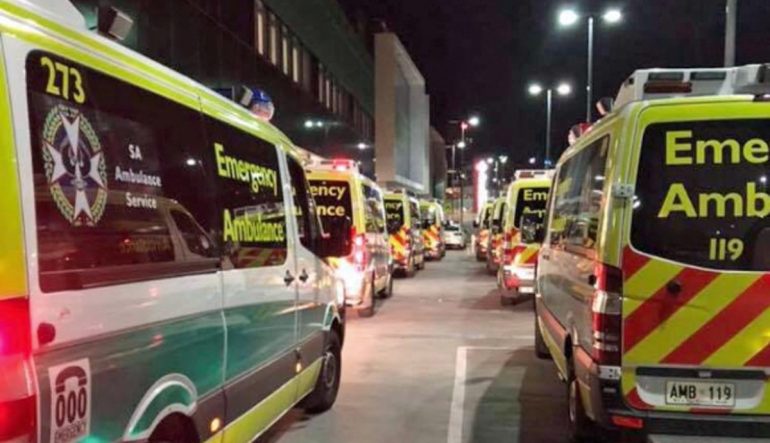People living in countries with sophisticated public health systems expect help will be available when they call for it. But with health systems under pressure, can we rely on an ambulance being available when we need it?
“Emergency services stretched to limit” is a popular headline. Reporting on ambulance services not being able to cope and ultra-long hospital wait times inspires community outrage.
From there, pressured health systems become a political issue – and the hunt for someone to blame kicks off again.
That blame often finds itself in the lap of the people trying to do the best job they can with available resources. Frontliners like paramedics and hospital staff frequently cop the ire of communities that fear the next time they call an ambulance, it won’t arrive.
These are people who have dedicated their lives to helping others. It’s little wonder they would try to find ways to use their stretched resources to help those in their care, whichever way they can.
Ambulance ramping
Take the issue of ambulance ramping. This is the practice of compensating for pressured hospital emergency departments by using returning ambulances as overflow beds.
In The ethics of ambulance ramping, authors Mr Matthew Perry and Dr Drew Carter claim this practice has become commonplace in major cities in the UK and Australia. They argue that while ramping temporarily solves one problem – compensating for lack of available resources within the Emergency Department (ED) – it compromises patient care and increases ambulance response times in the community.
There is also evidence this practice violates the principle of non-maleficence, or “do no harm”. This study into ramping concluded ramping contributes to prolonged ED length of stay and adds additional strain on ED service provision.
In other words, it contributes to the very problem it is intended to help compensate for.
As a result, you see headlines like these in the UK and in Australia.
Waiting for help to arrive
In the BBC story, examples were given of six- to eight-hour wait times for ambulances to arrive. COVID-fuelled demand had put significant pressure on EDs over the period in question – however COVID is only part of the story.
The problem is prevalent in parts of Australia, where COVID has had relatively little impact on ED congestion.
Whatever the cause, the resulting issue is increases in ambulance response times.
We know that the longer an ambulance takes to arrive to the scene of an out-of-hospital cardiac arrest (OHCA), the lower the patient’s chance of survival.
Related article: Knowing sudden cardiac arrest when we see it
This study from Germany, for example, correlated survival rates with faster and slower EMS systems. It concluded “(R)apid ambulance response is associated with a higher rate of survival from OHCA with good neurological outcome.”
A more recent study looked at Sweden, where OHCA ambulance response time has doubled over the past 30 years. It also found that shortening EMS response times “is likely to be a fast and effective way of increasing survival in OHCA.”
The issue, however, is that this conclusion is becoming increasingly difficult to achieve.
In Korea, speed of response has been improved by dispatching an additional ambulance or fire engine in addition to the routine ambulance dispatch. This in turn, translated into improved rates of survival to discharge and neurological outcomes.
These results are encouraging for cities with the resources to introduce an EMS multi-tiered response. They represent a more difficult target for cities and countries where demand increasingly outweighs EMS resources.
These situations highlight the need for communities in those regions to be better prepared, and ready to provide aid in the event of an emergency.



